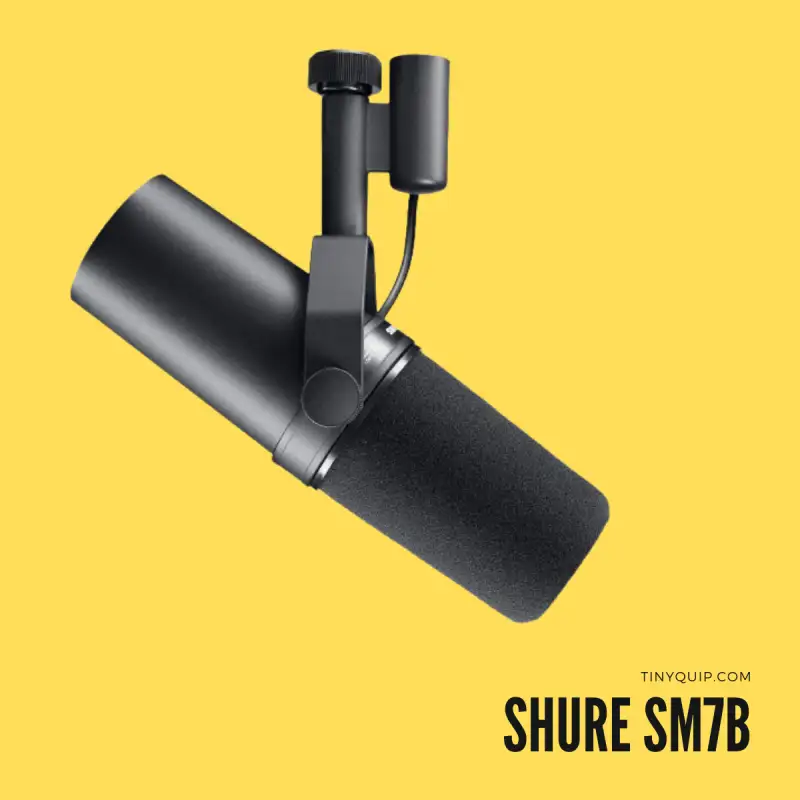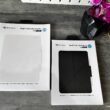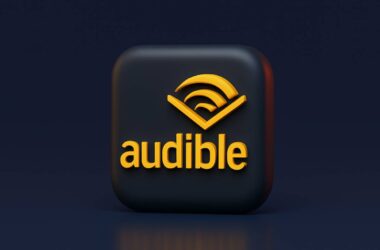“I can speak well, but when it comes to podcast scripting, I am blank most times.” More or less, this is what most of my podcasting friends sound when I interact with them. And yes, writing a podcast script is really a brain game, and this guide is all about helping you out with it.
Writing a podcast script can be challenging, and it is not the case only with new podcasters; most professionals also struggle. When you have a consistent audience, you need to serve them more creativity with each episode of your show. That’s what I try and do for all my audience that love reading podcast guides on Tiny Quip.
In this try-to-keep-simple guide, let’s discuss a few bullet points on how you can properly jot down a well-to-do podcast script and what things you need to take care of when you are scripting your podcast for the first time or the 99th time.

Your Audience is Yawning
There are two factors that can make your audience sleepy while listening to your podcast. One is a boring script, and the second is poor audio.
Here are my favorite 10 best microphones for podcasters that will make you sound-sick professional. And also budget-friendly for starters and professionals.
Podcast Scripting: The Index Table to Your Next Script
The first crucial element for me when scripting a podcast is structure. It is more like an Index where the “Introduction” always comes first and the “Outro” the last. Everything else is just placed perfectly in the middle in a way the audience can contemplate and not jump in the queue.
Every podcast script will for sure be slightly different based on what type of show you host. There are still a few common things or standards that you can use to keep your audience in a single direction and along with you with each part of the episode.
Here is what your podcast script should look like,
1. Introduction
Your episode should always start with an introduction, and there are some key elements that make it perfect.
The first factor is to keep your introduction short and friendly. Most times, it will be the same with all your episodes under a show to exhibit consistency, and you can make it a little fun and interesting by adding a piece of opening music to it. Ensure the tone is appreciative and melodic to the audience, short, and copyright-free.
Start by introducing yourself or club it with the second-most important factor in introduction; welcoming the audience to your show.
So, it can be something like, Welcome to the “podcast_name”; I am your host “your_name,” and today we are exploring our thoughts on “episode_title.”
If you have guests on your show, you can include them in the end “with guest_name.” If you have a co-host, let them introduce right after your introduction; for example,
I am your host, “your_name,” and “I am your co-host, “co-host_name.”
The third factor of your introduction should include a brief about your episode, what hot topics you will be discussing, and what users can expect by the end.
So, here is something your introduction in podcast script can look like,
Welcome listeners to your very own "podcast_name with the tagline"; I am your host "host_name," In today's episode, we are discussing some mind-blowing hot points on the "topic" with none other than "guest_name." The episode will be a fun rollercoaster ride on "topic" and why, what, and how it concerns you in everyday life. In the end, we have a surprise giveaway for all our listeners, so don't miss out on it.
Also Read: Podcast Cover Art Guide: Size, Logo, Dimensions, and More
2. Guest Introduction
Most times, podcasters leave a monotonous introduction about their guests just by mentioning their names and welcoming them. Introduce your guest to your audience, even if they aren’t famous. Your guests always expect you to introduce them in a proper way before you start the main headings of your podcast. You can mention who they are, what makes a credible person on the topic, and a little about their backstory.
It’s important to establish trust, credibility and provide context about your guest because they are the highlight of the episode. If there are multiple guests, do mention them in a hierarchical order, do not forget anyone, and before you start the show, you can grab some notes by asking them if you can mention so-and-so sensitive points or comic elements.
In my opinion, a guest introduction can be something like this,
Today joining us on the show is a very special guest, and you know him very well for his keen analytics on Wall Street (topic name) and beating over $1000 in daily profits just by selling frozen ice creams on the streets of New York, Mr. Michael (guest_name). Hi, Michael; welcome to the show, and I hope you are comfortable on this hot seat.
Also Read: Podcast RSS Feed: Everything You Need to Know
3. Sponsor Message or Advertisement
Monetizations are great for podcasts, but only when done right; we don’t want the listeners to get bored or get away from your show because of annoying or improper brand integration. In your podcast script, your advertisements or message from the sponsor should be on the popular cue, and it is mostly right after the introduction. However, I personally prefer to have the advertisement in the middle as, by then, your listeners are hooked and might still be on the episode even if there is a boring advertisement on the show.
One of the things I would suggest you do in your podcast is to not include a lot of sponsor messages or pressure your audience to make the call to action. Instead, keep it short, choose a popular cue, and don’t repeat it more than twice.
Usually, brands offer an advertisement script with notes or word-to-word lines about their products, and we need to deliver them. If they are the sponsor and there is no script, you can end your podcast’s introduction with “this podcast is brought to you by “brand name.” ” You can then follow it by their tagline or what the brand is about.
For choosing a popular cue, most podcast hosting platforms provide you with an analytics dashboard that has all the information about how listeners interact with your show. Here, you can also find how long users listen to your episodes before skipping out and choosing a popular cue before it. This is mainly for advertisement purposes and not for sponsors; sponsor messages are always in the outro and the intro of your episode.
Here are a few examples of sponsors and advertisements,
"After Intro" - Today's episode is brought to you by "brand_name" "tagline," and they are specialized in "brand description." Get a 20% off by using my coupon code; the link and details are in the description. "During Outro" - That's all for today; it was an episode brought to you by "brand_name" "tagline," and they are specialized in "brand description." Get a 20% off by using my coupon code; the link and details are in the description. "On Popular Cue" - Before we head to our next segment, let me introduce you to the "brand name" "tagline." "brand name" helps you with "brand description or message," and you get an additional 20% off by using my coupon code; the link and details are in the description.
There are a few additional things you can do. Let me summarize them for you in the list format –
- Offer your listeners a coupon code
- Keep a segment of your episode with a brand name – for example, a game brought to you by “brand name” “tagline.”
- Use the brand as a solution to a certain issue if relevant to the topic.
4. Segue
Segue is such a small element of any podcast show, but it directs and is essential to maintain a flow and relevancy for your audience. Let me make it simpler for you.
A podcast has basic 3-4 elements that include an intro, outro, sponsor message, call to action, and topics. Despite the type of show you are hosting, these elements remain the same, and there can only be additions to these. But when you complete an element and transition to the next element, there is a need for an element that can draw the line, and this is done by segue.
A segue can be tone, a small part of your theme’s music, a verbal transition, or even a jingle (it might not suit some podcast genres). But there needs to be a line between these elements. Since it is a podcast, there is almost no room for long pauses, so ensure your segue is not a long pause.
I prefer having a verbal transition from one element to another with a small tone followed by it. This gives the listener a clear understanding that we are now heading to the next part of the show.
Also Read: Podcast Covers: Best Apps to Create Stunning Podcast Cover Art
5. Outro
Most podcasters complicate their outro, and the most common mistake is not summarizing the key points and thanking the guest and production team in a proper manner. Outro is one of the key elements in your podcast script, and it is how you retain your audience or make them do certain actions. Here are some key notes to simplify the outro of your podcast episode.
You can start your outro with the phrase “In today’s episode, we covered (key points)” and then follow by thanking the guest – “I extend a warm thanks to “guest name” for joining us and letting our audience know (the value) to the “topic.”
You can then mention the sponsor, followed by the CTA’s in relation to the product as a link or coupon code in the description. Or a CTA such as rating the podcast, sharing it on social platforms and joining the community, or redirecting them to an old episode with a hint of the spice it has.
And finally, in the end, have music with a voiceover thanking the key members and production team that made your episode a success.
Here is what your podcast outro can look like,
In today's episode, we covered (key points)," and I extend a warm thanks to "guest_name" from the team and the listeners for giving us their valuable time and notes on the same. This episode was brought to you by the "brand name" "tagline." You can get a 20% off on all their products using my coupon code from the description, and don't forget to rate this episode and join us on all the social media platforms - "podcast name or social handles." "Short clippings of the old/new episode" You can check out our episode on "topic" with the episode and guest name on all the podcast platforms. Outro music with voiceover thanking the production team and key members.
This pretty much sums up how your ideal podcast script should look like. But if you are having a solo show or a conversational show, or a scripted show, the format can slightly differ. But no worries, let’s cover that too.
Also Read: Podcast Name Generators: How to Pick a Name and Tools
Podcast Script Examples: Shows with Formats
There can be multiple types of podcast shows, and depending on what type of show you have, there can be slight changes in the format. The basic elements still stay, which are the intro, main topic, and the outro with CTA and music.
If you have a production team, you can include thanking them, or if you are a solo rider, you can skip that step. Also, it is not often that you have a sponsor or advertisement on your show, mostly when you are new to the field of podcasting; those times, you can just skip out advertising and focus more on CTAs that help you build a community.
Let’s go through a few examples of such podcast scripts.
1. Interview or Guest Podcasts
The second-most common type of podcast, an interview podcast, is trickier if unprepared for it. There are not many changes to the ideal format of the podcast script that we discussed earlier, but there is always room for preparing your guests for the show.
Consider this, your podcast guest is an expert on a certain topic but may or may not be yet comfortable speaking on a mic or discussing at a very professional level. Most times, they can just lose direction and keep telling long stories from their past.
To prepare the script for an ideal interview podcast, you can always prepare a list of topics you will be hitting on and send it to your guest a couple of days before for preparation. This will help you with two objectives; the first is your guest will be mentally and thoughtfully be prepare for those topics, and there won’t be an instance – of “Oh, I shouldn’t have said that, or I should have included that” in the later. And secondly, you won’t miss the track and forget what questions you were about to ask next. There will always be a list with you.
Another thing I would suggest is always to keep your cues in order and have a mock drill before the actual guests arrive. The reason for this is simple if you are unordered or unprepared, you might miss out on a few things, and the guest won’t come again just to record that missed-out segment. In solo shows, you can always edit out in post-productions and add new re-recorded segments, but that’s not the case with the interview or guest podcasts.
Also Read: How to Clean Your Podcast Microphones? A Handy Guide
2. Solo Shows
The most popular type of podcast you will find on Apple, Spotify, or even on platforms like Google is solo podcasts. Now, these are the most convenient ones because you script the entire show; you can always edit it out and even re-record certain segments in the post-production.
The standard format of the template for solo is simple and unchanged, as mentioned above. Here is something the podcast script template should look like,
- Introduction with podcast theme music
- Sponsor message
- Podcast brief
- Headings/Sub-topics
- Notes
- Supporting Data
- Examples
- The backstory for the heading
- Segue
- Outro
- Summary
- Sponsor message
- Call to Action
- Podcast theme music with thanking production (optional/self-done)
When designing an outline for any podcast script, one of the things to note is always to keep your thoughts in a conversational fashion. You always need to engage your audience, even if you are the only person speaking. Pick up points, and ask your listeners questions, they will answer them in front of their devices, but the matter is, they’ll still answer, which is important to build a conversation. Keep your outline active, and do not use a dull script, bad jokes, or added unnecessary laughter; your podcast script outline should be more active and natural rather than made up.
Also Read: 8 Best Habit Tracker Apps for Android and iPhone
3. Conversational Podcast Shows
Conversational podcast shows are more like an interview, but here the host is equally as curious as all the other listeners. Here, it is more like a question-answer session where the host asks a question, and the guest explains an answer to the host and to the listener.
The only small line of difference here is the host hardly disturbs the guests and rather is immersed in understanding the guest’s perspective about the backstory. One of the classic examples of this type of podcast would be The Ranveer Show, where the host is having a conversational question-answer session with the guest but not exactly like an interview. There is a thin line of difference that most podcasters fail to see and end up mixing both, which is also fine and not a crime.
The template for such a conversation podcast script should look something like this,
- Theme music
- Introduction
- Welcoming listeners
- Self-introduction
- Guest introduction with back story and credibility
- Topic Brief
- Sponsor message
- Opening discussion
- Question-answer conversation
- Outro
- Summary
- Sponsor message
- Thanking guest
- Call to Action
- Podcast theme music with thanking production
Always remember in a conversation podcast or any conversation in general, one person is speaking, and the other is listening. So try and avoid instances where you need to interrupt; if you have questions, you can jot them down in a notepad and get back to the guests once they are done answering.
Also Read: How to Move from Blogger to WordPress? A Handy Guide
More Things to Do to Your Podcast Script
Thankfully, there are a few more things you can do to ensure your podcast script is friendlier and connects to your audience. I am sure this guide won’t cover it all, but a few points will surely help you in curating a captivating podcast script.
- Keep it conversational: One of the clear pieces of advice that every podcaster should take is to keep your podcast script and tone conversational. Be it a solo show, interview, minimalist, or even huge game-based episodes, keeping your podcast conversational is important. It ensures your audience is involved and along with you on the track.
- Do not hesitate to make edits: When writing a podcast script, most people would definitely want to use their creative side of the brain. There will be some fun elements, some anecdotes, and a lot of pieces from your backstory that you would want to share. However, most times, while being creative, we lose track of our actual podcast script and just beat around the bush. So, always take printouts of your podcast script, rehearse it, see if there is room for changes, and do it without hesitating, even at the last minute, before the show starts.
- The podcast script is great but is your microphone? A good podcast script may still sound annoying if you are not using the right set of accessories in your production. Mainly with the microphones, so if you want to sound more clear and deliver your script with confidence, a good microphone is a must. Here are some of my picks on the best microphones for podcasting.
- Keep yourself short: Though there is no time limit on most podcast hosting platforms for how long your episodes should be, it is, however, advisable to keep your episode short. You can create multiple episodes on the same topic and give them numbering or parts but always keep them short. Long podcast episodes are boring, and often your audience can skip them. I suggest devising your script by covering the topic in multiple parts and making shorter episodes.
- Practice, Practice, Practice: Now, though you have written your script and you very well know what content is present in there, it is still always advisable to practice the podcast script a couple of times. This will boost your confidence and minimalize the risk of making mistakes.
- Don’t go word-to-word: Most podcast scriptwriters create a script that goes word-to-word, including all the commas and full stops. It makes it harder for podcasters to remember, and it is no more podcast scripting but rather mugging your thoughts in front of the audience. In my opinion, the main topics of your podcast script should only include data and important notes which act as a reference, and most of the other things around it come naturally from you, which also makes it more conversational rather than dictating. Be yourself.
- Maintain your pace with the script: Your podcast episodes connect with your audience and deliver your thoughts, and during this delivery, it is important to maintain the pace. Consider the fact that not all of your audience will have the same set of understanding or grasping powers; you need to maintain a normal pace that is easier for the larger part of the audience to understand and respond. Too slow or too fast will only be helpful in losing your listeners in mid or before the 20% of your show.
Also Read: Mac Clipboard History: Here is How You Can View Last Copied
Frequently Asked Questions [FAQs]
A podcast script is more like an outline or roadmap from start to finish of your podcast episode before and while recording it. A script helps you maintain the direction, flow, and structure of your episode and leaves you with almost no room for mistakes.
A 20-minute long podcast script can have anywhere between 2500-3000 words, and depending upon your pace and knowledge, you can even extend the script to 3500 words.
A basic structure of a podcast script includes an intro, welcoming guest, sponsor message, topic, segue, outro, and CTAs. Depending on the type of podcast show you have; the podcast script structure can be tweaked.
Wrapping up: Writing a Podcast Script That Makes Sense
These are some of my handy tips in this guide that should help you with podcast scripting for solo and conversational podcast episodes. There are a few points here and there that can help you curate the best, but what matters the most is to keep yourself natural and keep practicing.
You can check out more helpful guides on podcasts on our website – Tiny Quip, and bring the best for your next show.

Build a WordPress Website for Your Podcast Audience with Kinsta
Be it redirecting your audience to your e-commerce store, making them read your blogs, or creating a whole new community. Do it all with managed WordPress on Kinsta.
- High-performance CDN
- Google’s cloud servers
- Reduce load times by almost 49% (TTFB, cache, and more)
- Site backups and uptime checks
- Free SSL certificates
If you like this guide, do give this a quick share on your social media handles, and do tag us. Also, join our Telegram channel, Facebook page, and Twitter to never miss a quick update.
Happy podcasting!







